Tenmoku Auction: Records, Market, Collector’s Guide

1. Introduction
In the world of tea ceramics, few items capture collectors’ imaginations like Tenmoku bowls. Known for their shimmering glazes, rich historical lineage, and mesmerizing surface patterns such as “oil-spot” and “hare’s fur,” these bowls are far more than functional teaware. They represent centuries of refined artistry passed down from the Song Dynasty and, today, they often headline major auction houses like Sotheby’s and Christie’s.
In this article, we’ll explore the most significant Tenmoku auction records, dive into current market trends, and give you a practical collector’s guide. Whether you’re a passionate tea drinker, an aspiring collector, or someone curious about Tenmoku’s booming secondary market, this article will offer value-packed insights.
2. Tenmoku Auctions: A Growing Market
Tenmoku ware (also called Jian Zhan in China and Tenmoku in Japan) emerged during the Song Dynasty and became one of the most revered styles of teabowl across East Asia. Its popularity took off again in the modern era as collectors rediscovered its intricate glazes and historical significance.
Major international auction houses — especially Christie’s, Sotheby’s, and Bonhams — now dedicate entire sections of their Asian ceramics auctions to Tenmoku. The combination of scarcity, beauty, and cultural value has created a competitive market, drawing bidders from around the world.
As a result, Tenmoku auction prices have skyrocketed over the past two decades. This growth is fueled not only by collectors in Asia but also by Western museums, investors, and tea lovers who appreciate its cultural depth.
3. Tenmoku Auction Records That Made Headlines
3.1 Song Dynasty Oil-Spot Tenmoku – $11.7 Million
One of the most famous Tenmoku auction records was set at a Christie’s New York auction in 2016. A rare Song Dynasty oil-spot Jian Zhan bowl soared to an astonishing USD $11,701,000, cementing its status as the most expensive Tenmoku ever sold at auction. The bowl’s lustrous black glaze was flecked with metallic silver spots, producing a mesmerizing pattern that captivated bidders.



3.2 Hare’s Fur Tenmoku – $1.09 Million
In 2017, a Song Dynasty hare’s fur Tenmoku tea bowl went under the hammer at Sotheby’s New York for USD $1,092,500. This bowl’s distinctive glaze — named for its resemblance to fine rabbit hairs — displayed perfect vertical streaks that ran gracefully from rim to base. Its pristine condition and prestigious provenance helped drive up the final price.
3.3 Other Notable Sales
-
A silver-rimmed Song Dynasty Tenmoku bowl sold at Sotheby’s London in 2011 for GBP £1,105,250, demonstrating the European demand for these exquisite pieces.
-
Even smaller or less famous Tenmoku pieces routinely achieve six-figure prices, especially those with intricate glaze effects like yuteki (oil-spot) and hares-fur.
4. What Drives Tenmoku Prices at Auction?
Collectors and investors often wonder what factors cause Tenmoku tea bowls to command millions at auction. Let’s look at the most important elements:
4.1 Age and Provenance
Genuine Song Dynasty Tenmoku bowls with clear provenance — such as those previously held in famous collections — will attract premium prices. Auction houses often highlight the bowl’s origin, excavation details, or lineage of ownership, which can greatly boost buyer confidence.
4.2 Rarity and Pattern
Within Tenmoku ware, the most coveted patterns — like the deep metallic oil-spot or perfectly uniform hare’s fur — are highly rare. Even a subtle glaze variation can make the difference between a modest sale and a record-breaking one.
4.3 Condition
Because Tenmoku bowls are centuries old and fragile, condition plays a huge role in auction prices. Undamaged examples with intact rims, vibrant glazes, and minimal restoration will sell for much higher prices.
4.4 Market Hype and Promotion
Auction houses often create a sense of anticipation around particular Tenmoku pieces by publishing glossy catalogs, commissioning scholarly essays, and showcasing them at pre-auction previews. Increased visibility translates into higher bids.
5. What Tenmoku Auctions Teach Tea Lovers and Collectors
Beyond mere spectacle and record-breaking figures, Tenmoku auctions hold valuable lessons for tea lovers:
5.1 Investment Potential
Collectors realize that acquiring a genuine Tenmoku bowl can be more than a passionate pursuit — it can also be a lucrative investment. Given the strong upward trend in Tenmoku auction prices, quality pieces purchased today may appreciate substantially over time.
5.2 Authenticity and Verification
As prices rise, so do counterfeits. Serious collectors must be equipped to verify authenticity, often working with third-party appraisers or buying only from reputable galleries and auction houses.
5.3 Develop a Disciplined Eye
Attending previews, handling bowls firsthand, and studying auction catalogs are all practical ways to sharpen your eye. Knowing what makes one Tenmoku bowl special — a particularly vivid glaze, a well-shaped form — will make you a savvier buyer.
6. The Impact of Auctions on Modern Handmade Tenmoku
While most top-tier Tenmoku sold at auction are centuries old, the enthusiasm generated by these sales trickles down to the modern craft market as well. Contemporary potters around the world are inspired by traditional Tenmoku glaze recipes and firing techniques.
This creates a vibrant niche of handmade Tenmoku that captures the aesthetic of its Song Dynasty ancestors — at a price point that most tea lovers can afford. Many independent ceramics shops and online stores now offer high-quality reproductions, allowing new tea drinkers to appreciate Tenmoku’s beauty without spending millions at auction.
7. Conclusion and What’s Next
As Tenmoku auctions continue to produce headline-grabbing sales and broaden public appreciation of this timeless craft, their value — both aesthetic and financial — will likely continue to rise. Whether you’re an investor, collector, tea drinker, or simply someone who appreciates fine ceramics, paying attention to Tenmoku auction trends can inform your decisions and deepen your understanding of this extraordinary art form.
If you’re just starting your Tenmoku journey, begin by studying its glazes and shapes, following major auction results, and investing in a few well-made contemporary pieces. Who knows — one day you might even hold a future record-breaker in your hands!
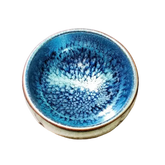


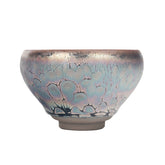
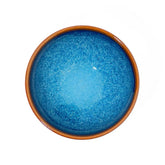

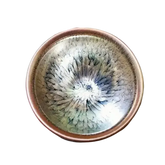
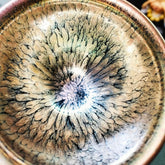


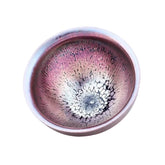


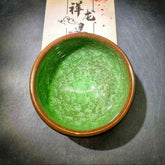
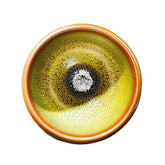
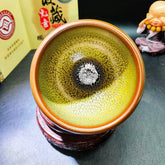
Leave a comment
Please note, comments need to be approved before they are published.